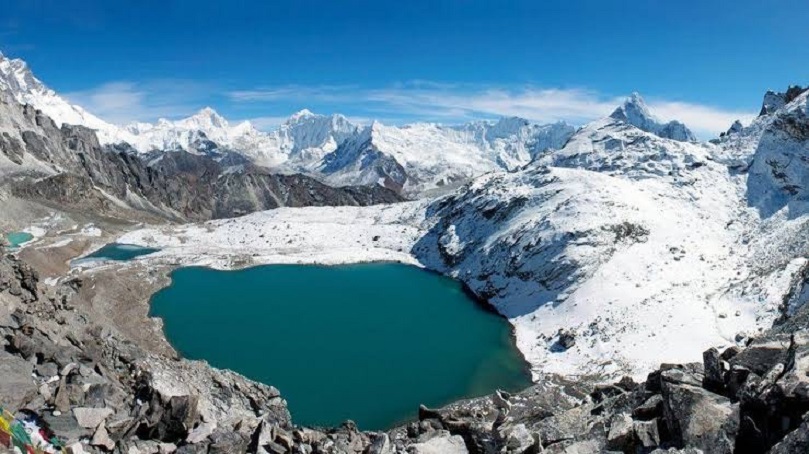122 Glaciers nestled within this Majestic Pir Panjal mountain range have shrunk dramatically over the past four decades
By: Javid Amin
The mighty Pir Panjal mountain range, a crown jewel of the Kashmir basin, is experiencing a troubling thaw. A recent study by researchers Mohammad Ashraf Ganai and Syed Qaiser Bukhari from the National Institute of Technology paints a concerning picture: 122 glaciers nestled within this majestic range have shrunk dramatically over the past four decades. This alarming retreat raises serious concerns about water scarcity, disrupted ecosystems, and the potential for catastrophic glacial lake outburst floods (GLOFs).
A Legacy of Ice, Now Shrinking:
The study, published in the International Journal of Hydrology Science and Technology, analyzed data from 1980 to 2020. It revealed a staggering loss of glacial mass. What once covered a sprawling 25.7 square kilometers has dwindled to a mere 15.9 square kilometers – a decline of nearly 40% in just 40 years. This dramatic shrinkage signifies an accelerating trend of glacial retreat, a hallmark of climate change’s relentless grip on our planet.
Uneven Melting: A Tale of Two Sides:
The research delves deeper, uncovering a fascinating detail – the aspect (direction a glacier faces) plays a crucial role in its melting rate. Glaciers facing south, exposed to the brunt of the sun’s rays, have suffered more significant melting compared to their north-facing counterparts. This highlights the undeniable influence of solar radiation on glacial retreat.
Furthermore, the study found that altitude plays a part as well. Glaciers perched at higher elevations, between 3,800 and 4,000 meters above sea level, have exhibited a faster rate of melting compared to those nestled at lower altitudes. This can be attributed to the thinner atmosphere at higher elevations, offering less protection from the sun’s heat.
A Cascade of Consequences: Beyond the Shrinking Ice
The shrinking glaciers of Pir Panjal are more than just a scenic loss. This retreat has far-reaching consequences that threaten the region’s delicate ecological balance and the lives of its inhabitants.
-
Water Scarcity Looms: Glaciers serve as vital reservoirs, storing winter snowfall and releasing it gradually throughout the year. With their decline, the region faces a looming water crisis. This meltwater feeds rivers, streams, and irrigation canals, crucial for agriculture and everyday life. A decrease in meltwater flow will severely impact agricultural productivity, potentially leading to food shortages.
-
Ecosystems in Peril: Glaciers play a vital role in maintaining healthy ecosystems. They influence downstream water quality, regulate river flows, and provide habitat for unique flora and fauna. The decline in glacial mass disrupts these intricate relationships, jeopardizing the health of the entire ecosystem.
-
The Threat of GLOFs: A particularly concerning consequence of glacial retreat is the formation of glacial lakes. As glaciers melt, they create large bodies of water dammed by unstable moraine walls (debris left behind by glaciers). These precariously balanced lakes pose a significant threat – a sudden breach in the moraine wall can trigger a GLOF, a catastrophic flood that can cause immense destruction downstream.
A Call to Action: Protecting the Frozen Sentinels
The findings of this study serve as a stark reminder of the urgency of climate action. Here’s what we can do:
-
Curbing Emissions: Reducing greenhouse gas emissions is paramount. We must transition to cleaner energy sources and adopt sustainable practices to slow down global warming, the primary driver of glacial retreat.
-
Glacier Monitoring: Regular monitoring of glaciers through advanced technologies like satellite imagery and drone surveys is crucial to understand the rate of retreat and predict potential hazards like GLOFs.
-
Community Awareness: Educating local communities about the threats posed by glacial retreat and GLOFs is essential. This empowers them to take preventive measures and be prepared for potential disasters.
The Pir Panjal glaciers stand as sentinels, not just of the region’s beauty, but of the delicate balance of our planet’s climate. Their decline is a warning bell – a call to action for all of us to protect these vital sources of water and ensure a sustainable future.

